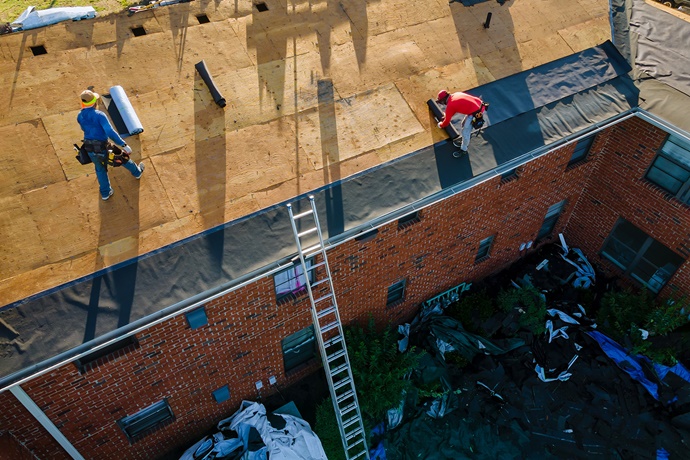For the foreseeable future, the construction industry is on track for continued growth thanks, in part, to the passage of the $1.2 trillion Infrastructure Investment and Jobs Act (IIJA).
The act, which includes spending on infrastructure projects from transportation to the electrical grid, is a complex law involving more than ten separate federal agencies, state governments and private investors for public-private projects.
While identifying the scope of projects within infrastructure programs will take time, and funding will reach different regions of the country at different times, many of these programs will undoubtedly create increased demand for materials and skilled labor that are already in short supply.
At a time when the industry is still experiencing construction delays related to ongoing supply chain issues and lack of manpower, these additional demands will present both challenges and opportunities for general contractors as well as the retail insurance agents and brokers who serve them.
For agents and brokers who currently have a book of business that includes builder’s risk, now is a good time to look at market conditions and talk to your insureds about ongoing trends that are likely to impact future pricing for new projects.
For those who serve small- and mid-sized contractors, now is a good time to educate your clients about builder’s risk insurance. Labor demands are likely to create opportunities for smaller or less experienced general contractors to bid on projects with risk exposures they might not have previously considered.
Builder’s Risk 101
Construction contracts typically require the building owner/investor or general contractor to purchase and maintain a builder’s risk policy that covers loss or damage to construction materials during construction.
Mid-sized contractors may have previously been covered as an additional insured sub-contractor under a builder’s risk policy but might not be aware of the factors involved in purchasing such a policy as the primary insured.
For insureds who fall into this group, now is a good time to proactively educate them about the need for builder’s risk insurance. Retail brokers may also want to encourage them to seek preliminary insurance quotes prior to bidding projects and signing contracts so they can avoid a situation where they underbid a job or have difficulty securing insurance coverage for a certain project scope.
Because no two construction projects are the same, there is no standard template for builder’s risk and coverage can vary widely depending on the insurer, the contractor and the project scope.
Working with an experienced broker can help retailers navigate the common exposures and coverages under builder’s risk, the factors that impact pricing, and the information to include in quote submissions.
Market Factors and Pricing
While capacity and pricing in the builder’s risk market have stabilized over the past six months, adequate property value calculations and coverage period extensions remain key factors for determining policy rates, terms and conditions.
Whether new to the game or veteran players, insureds should consider an unexpected increase in cost of materials and potential construction delays as a matter of course when they evaluate projected construction costs and seek insurance quotes. Since the onset of the pandemic, and with ongoing global supply chain issues, this has increasingly become less of a question of “if” it will impact a project and more of “when.”
As submission activity increases, the time for underwriting to return quotes will also increase. Retail agents and brokers can help their insureds obtain the coverages they need by encouraging clients to start the quoting process early and include all pertinent data upfront in underwriting requests.
Information to Include in Submissions
Specialty underwriters are more likely to give priority to submissions that include all pertinent information compared to ones with minimal or lacking in critical detail.
Submission requirements vary by scope and underwriters may have their own criteria for analyzing the project risks. Key information with supporting documentation listed below is a good start for any underwriter:
- Scope or statement of work
- Project overview (location, protection, construction details, civil and architectural plans / drawings)
- Detailed Gantt charts including critical milestones
- Project/property value
- Guaranteed max price (GMP) / hard costs, including breakdown by construction material / key trades
- Soft costs / delay in start-up (DSU), including breakdown and proforma(s)
- Contract requirements
- Minimum insurance coverages including critical CAT sublimits and deductible requirements
- Logistics of the project
- Details on how and where construction materials are stored including project laydown areas
- How materials are transported to the site
- Project specific site plan
- Expertise and experience of contractors and sub-contractors involved in the project
Takeaway
The IIJA will increase opportunities to sell builder’s risk insurance and those retail agents and brokers who can offer consultative services to clients will secure coverages that align best with the insureds’ needs. Every construction project is unique, and the experts in Amwins’ construction specialty practice can help you and your clients navigate the nuanced builder’s risk marketplace to secure the right protection.
For more information on the IIJA, The Brookings Institute has created a Federal Hub to keep track of information for every program the law funds, the key characteristics of those programs and an evolving timeline.


